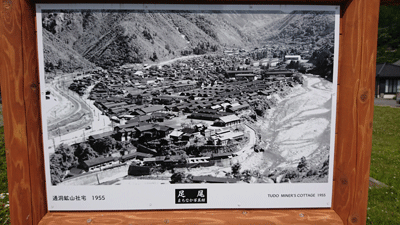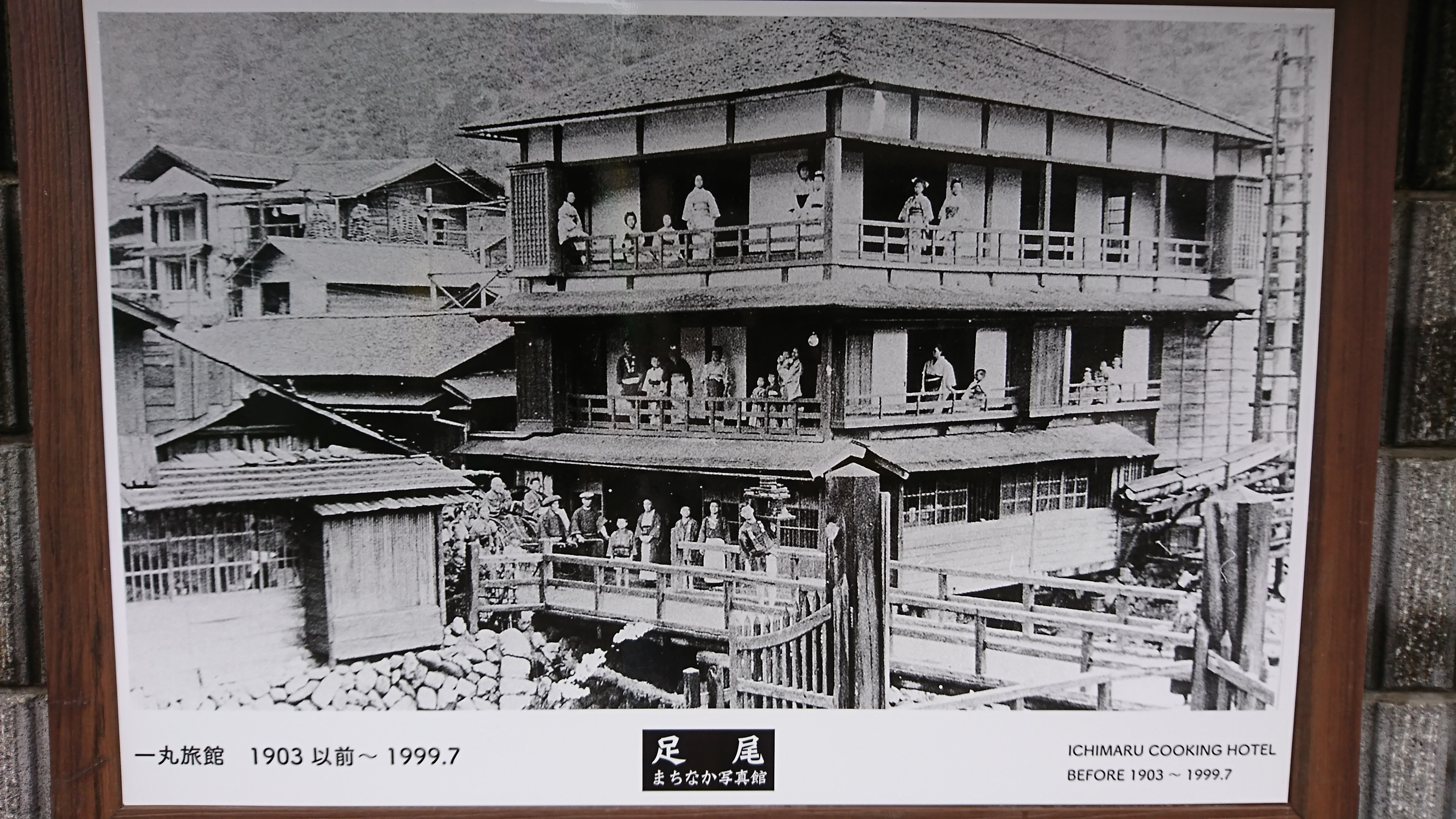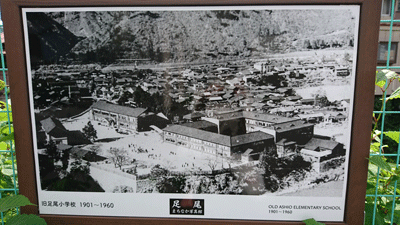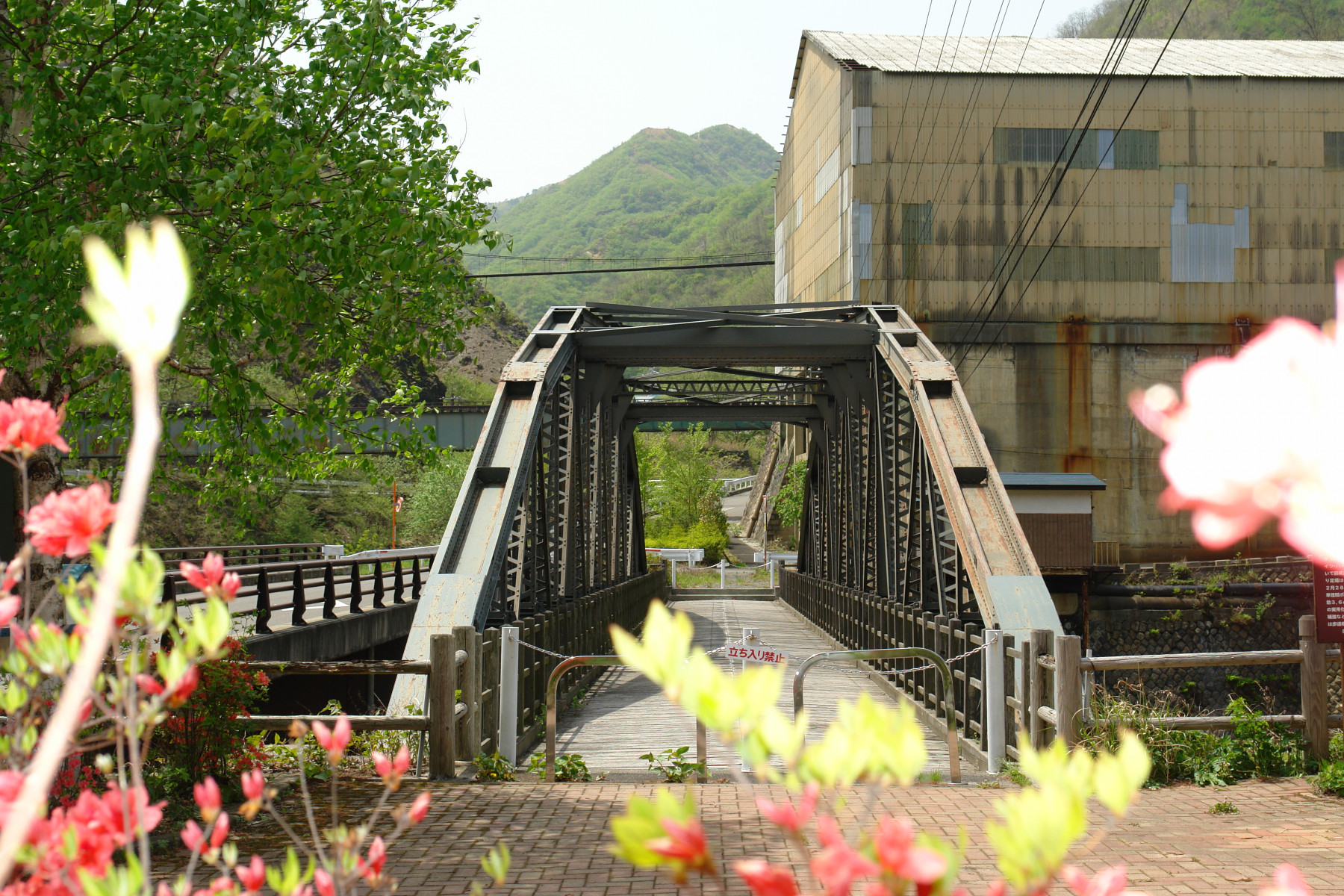産業遺産の見どころ
通洞鉱山社宅 TUDO MINER'S COTTAGE1955

通洞鉱山住宅地域は、新梨子地区の一部で近代足尾銅山の発展で造成された鉱業集落です。大正から閉山までの足尾銅山では最大の集落でした。
通洞とは、鉱山用語で鉱山の主要な運搬兼排水坑道を意味します。足尾銅山庶務を長らくされた村上安正氏によれば、日本の近代鉱山では、鉱山の進展によって通洞開鑿が行われましたが、90年に渡って一つの通洞を使用した例はないそうです。
通洞の集落は、1885(明治18)年9月の起工とともに形成され、明治20年ごろは40~50戸に過ぎませんでしたが、21年の通洞選鉱場建設、22年、27年の拡張工事、30年の鉱毒予防工事に伴う簀子橋選鉱場との合併、通洞地並以下の下部開発のための立坑の開鑿等人口が増加していきました。
THE TSUDO MINER'S COTTAGE 1955
The Tsudo Mine Residential Area is a mining settlement created by the development of the Ashio Copper Mine in a part of the Shinnashiko district in modern days. The residential area was the largest settlement in Ashio Copper Mine from the Taisho era to the closure of mine.
Tsudo is a mining term for the main transpor pitd drainage tunnel of a mine. According to Mr. Yasumasa Murakami, who has overseen general affairs at Ashio Copper Mine, in modern Japanese mines, tunnels were often constructed as mining progresses, but there is no example of utilizing one tunnel for 90 years.
The village of Tsudo was formed with the start of construction in September 1885, and there were only 40 to 50 households around 1885. However the population has increased due to the construction of the Tsudo concentrator in 1888, the expansion work in 1889 and 1894, the merger with the ? bridge concentrator for the mine poisoning prevention work in 1897, and the opening of the shaft for development in the downstream.
足尾銅山通洞医局 ASHIO COPPER MINE TUDO PRIVATE HOSPITAL BY FURUKAWA CO.LTD1910~1967

通洞医局は、1896(明治29)年に本山医局の分院として洋風木造建築で建てられ、以後建物の増築と設備を拡充して来ましたが、明治41年には足尾暴動のために本山医局に代わって本院となりました。
大正11年には、別館が新築され足尾銅山付属病院の中核となりました。当時、医師8名、歯科医師2名、産婆さん2名などを擁し、内科、外科、眼科、耳鼻科、産婦人科、歯科の総合病院で37名を収容する病室をもっていました。治療の水準は、栃木県内では明治中期から戦前まで最高の域にありました。1930(昭和5)年には珪肺のレントゲン検査が開始されましたが、それ以前から医師による研究が進められたこともあって、この年に施行された鉱夫珪肺扶助の第1号が認定されました。
戦後も足尾銅山を核にして医療と地域医療に貢献しましたが、他地域との格差が広がり、医師の確保が困難になっていきました。特に閉山後は従業員の急減などから維持が困難になり廃止されました。
THE ASHIO COPPER MINE TUDO MEDICAL OFFICE 1910-1967
The Tsudo Medical Office was built in 1896 as a branch of the Honzan Medical Office, with a Western-style wooden structure and the building and its facilities have been expanded since then. Affected by the Ashio riot, the branch office became the main hospital, taking over Honzan Medical office in 1908.
In 1918, an annex was newly buil pitd the Tsudo medical office became the core part of Ashio Copper Mine Hospital. They had 8 doctors, 2 dentists, and 2 midwives, etc., and covered general practitioner, surgery, ophthalmology, otolaryngology, obstetrics and gynecology, and dentistry, with hospital rooms that could accommodate 37 people. The level of treatment was one of the best in Tochigi prefecture from the middle of the Meiji era to the prewar days. X-ray examination of silicosis was first conducted in 1930, and silicosis assistance that was carried out on a miner in that year was certified as the first case, because of research being progressed by doctors before the examination.
Ashio Copper Mine contributed to medical care and local community medicine after the war, however as the gap between other regions widened, it became difficult to secure enough numbers of doctors. Especially after the mine was closed, the hospital was abolished since it became difficult to maintain their service due to the sudden decrease in employees.
商人宿通 COMMERCIAL HOTEL(AKINDO YADO)STREET1897

明治30年当時、足尾銅山を目がけて様々な商人が来山しては稼いだり住み着いたりしていました。
この商人宿通は各地から来た商人たちの滞在地域だったようです。昭和40年時代まで残っていた連れ込み宿がありました。
当時の盛況振りが覗われるフォトです。
THE AKINDO YADO (COMMERCIAL HOTEL) STREET 1897
In the time of 189, various merchants came to Ashio Copper Mine to start a business and settled down in the area.
The Akindo Yado Street was the area where merchants from all over the country stayed. One love hotel kept their business open until early 1970's.
This photo shows how busy the street was back in the days.
一丸旅館 OLD ICHIMARU COOKING HOTEL BEFORE1889~1999.7

一丸旅館は、明治22年以前に割烹旅館として出発し鶴屋廃業後はそれに代わる旅館となりました。
当時、足尾には三階建ての建屋が3件、本山坑エリアの栃本屋、通洞坑エリア鋳銭座駐車場前の元足利銀行の割烹八百佐そして一丸旅館です。のちに近隣火災により建替えられて2階建てになりました。
閉山後は客足が減少し後継者もいないことから廃業する予定でしたが、1999年7月2日の夜に近隣火災で全焼してしまいました。
隣接の渋川にかかる橋は姿見橋という粋な名前がつけられています。
ICHIMARU RYOKAN (JAPANESE STYLE HOTEL)1889-1999.7
Ichimaru Ryokan started as a hotel priding itself on its restaurant before1889, and took over the spot of Tsuruya hotel after they closed.
At that time, Ashio had three of three- story buildings; the Tochimotoya in the Honzan mine area, the Yaosa restraunt which is the current Ashikaga Bank in the Tsudo mine area, and the Ichimaru Ryokan. Later, Ichimaru Ryokan was rebuilt to a two-story building due to fire happened in the neighborhood.
After the mine closed, the business was scheduled to be closed due to a decrease in the number of customers and no successor. However, the building ends up being destroyed by a fire on the night of July 2, 1999.
The bridge goes over the Shibu river which runs near the building is named the Sugatami Bridge.
足尾小学校 OLD ASHIO ELEMENTARY SCHOOL1901~1955

足尾小学校は、1873(明治6)年本妙寺に仮設し、19年に新梨子に校舎を移転しましたが、1901(明治34)年9月現在地に新築移転しました。
本山小学校とともに足尾では中心的存在で、上下二つに分かれ、中庭にはプールもありました。
大正14年、昭和6年の上下校舎の焼失、昭和35年の全焼と火災に見舞われました。
新校舎時代でも人数が多く1964年の入学式では新入生は新校舎に入れず敷地内にあった旧女学校で1年間学ぶということもありました。
ASHIO ELEMENTARY SCHOOL 1901-1955
Ashio Elementary School was temporarily built in 1873 and was moved to Shinnashiko in 1919, the building was renewed at the current location in September 1901.
Along with Honzan Elementary School, the school was the centerpiece of the town of Ashio. The school building consisted of upper par pitd lower par pitd had a pool in the courtyard.
In 1914, both upper and lower buildings were destroyed by fire in 1925, and the school was completely burnt down in 1960.
The school had a lot of students that the first year students could not fit into the new building at the welcoming ceremony in 1964. Those could not fit into the main building studied at the former girls' school building which was on the premises for a year.


